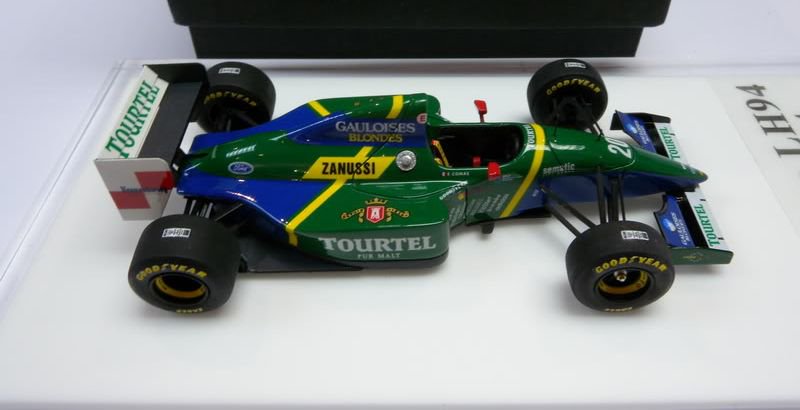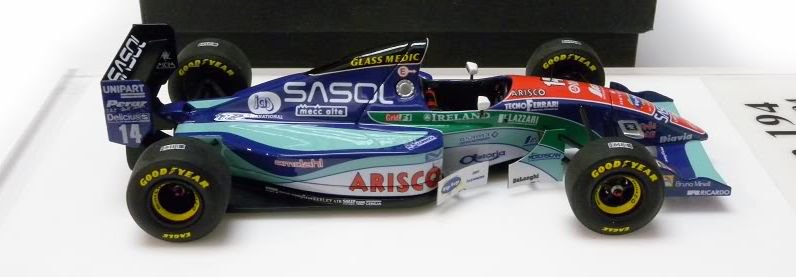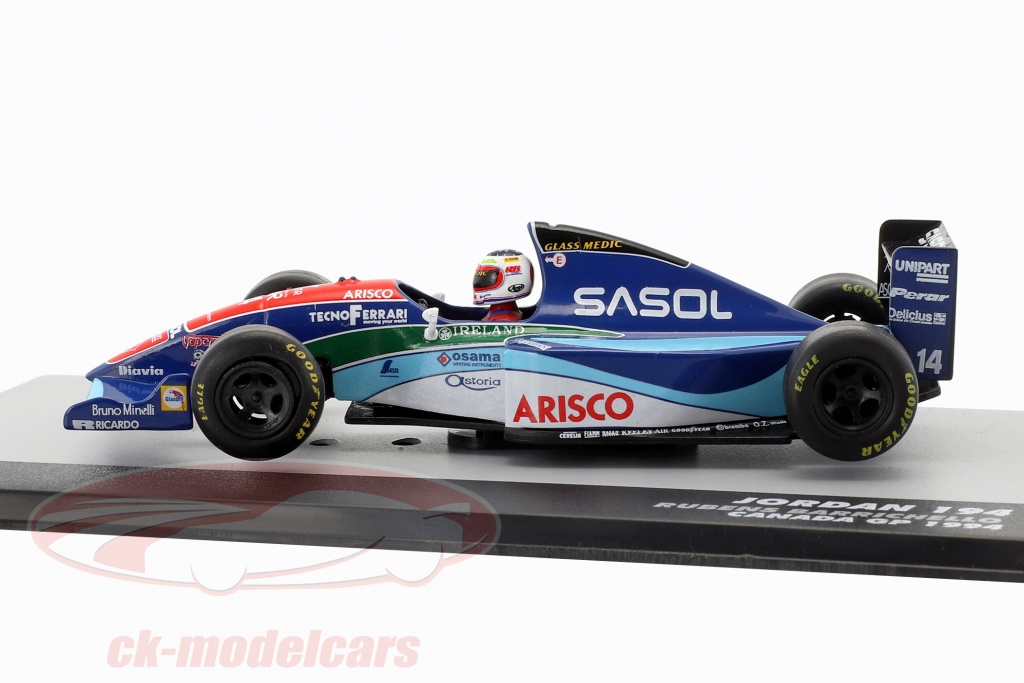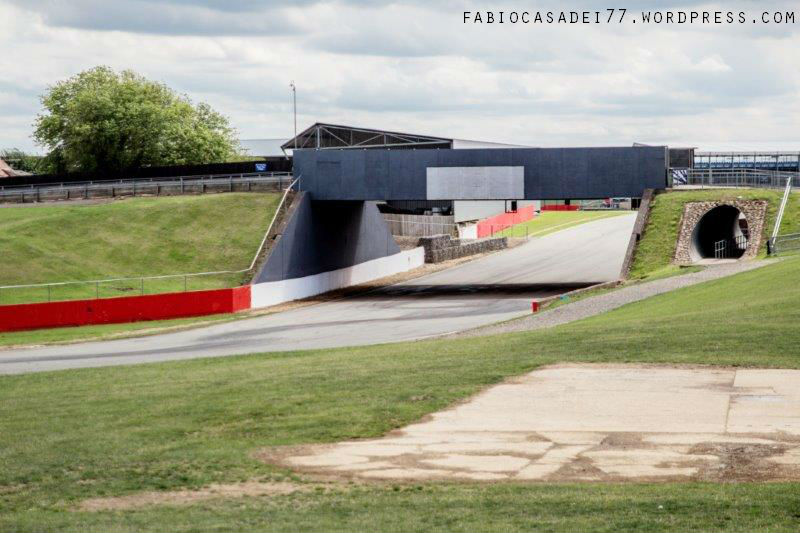Background
The 1994 Ligier was a 'B' spec car of the 1993 Ligier JS39. The car was not as competitive as the previous year, but the highlight came in the German GP when the cars scored a double podium finish. The car was reliable when reliability was not a given, and the car remarkable only failed once all season. So at Germany, they were aided by multiple incidents in the early part of the race, including 10 cars being taken out at the first corner, and following retirements to several front runners through the GP, they held on for a strong finish. The team ended the year 6th in the Constructors' Championship.Oliver Panis was a driver who was also caught out by the plank-wear rule introduced part way into the season, the other notable occasion this occurred was Schumacher at the Belgian Grand Prix. Panis was disqualified from the race where he finished 9th on the road.
Johnny Herbert was bought out of his long-term contract with Lotus prior to the European Grand Prix and raced for Ligier for one race before moving to Benetton - the only driver I know in the history of F1 to race for 3 teams in 3 consecutive races. Herbert qualified 4 tenths of a second quicker than Panis and started 4 places higher up, finishing the race in 8th place ahead of his teammate.
With Herbert moving on, Franck Lagorce, the team's test driver, filled the seat for the final two races.
The team were struggling financially, and ended up selling the team to Flavio Briatore and Tom Walkinshaw, both with Benetton at the time. As noted in the Schumacher tribute blog, Briatore used this to his advantage to gain the standard setting Renault engines to his Benetton team. Tom Walkinshaw was the one who concentrated on running the Ligier outfit.
Also Schumacher tested the Ligier after the end of the season, incidentally he also drove the Ferrari 412T1B shortly after leaving Benetton. In a head to head, Schumacher was a second faster than regular driver Panis, though Panis would get within a tenth on a subsequent day.
You can read more about Briatore's ownership and Schumacher's test here: www.unracedf1.com
Onyx/Heritage Formula
Outwardly speaking, the 1994 JS39B was very similar to the 1993 JS39 car, so I will include some pictures of that car below for comparison. I was about to let rip into the inaccuracies of the shape and how it had gotten worse rather than better with the changes from the 1993 car. But then I remembered that there were times when Onyx would reuse an old shape and pass that off as a different car (e.g. the 1995 Forti is actually the 1996 Tyrrell). It was then that I noticed that they had reused the 1993 Williams FW15 car and put a Ligier livery on top.
I'm not saying that re-using an old shape is right, but they may have well just stuck with the 1993 JS39 rather than the Williams. So ignoring the shape, I think the blue is wrong, it was much darker in real life. The cars were hand made and it was really variable how well they had been applied, the rear wing end plate on the one pictured seems too big for the car.
Score: 2/10
BBR
A nice offering from BBR of the German GP version of the JS39B.
Score: 8/10
Spark have in 2019 released their 1994 version, including the Schumacher test model. This is the late season model with the extra winglets by the rear wheel, the curved lower rear wing and the hole in the engine cover. I was pleasantly surprised when I got the model and reviewed it. Besides my usual gripes about the size of the tyres and the driver helmet, I think the rollover bar should be straighter vertically from front view, making the airbox a little more bulbous like the real car. The front wing looks a little blocky, and I think could be better refined. If I was really nitpicking, the upper rear wing element should be deeper whilst the middle element should be shallower. Sadly the car features the early season diffuser. Despite these points, I still like the model, it has nice details throughout, it would just be nice if it was slightly more refined.
Score: 7/10
Some other versions released:
Score: 8/10
Spark
 |
| Spark S7406 |
Some other versions released:
 |
| Spark S7400 |
The Panis version is from the Canadian GP, with the engine cover hole a the top and has no barge boards.
 |
| Spark S7401 |
This is the French GP car of Eric Bernard. The engine cover has the hole in a slightly different position, and it has straight rear wings.
 |
| Spark S7402 |
Both Panis and Bernard finished on the podium at the German GP where many cars retired. It's a shame they didn't bother with a low downforce spec when they had spent time updating the engine covers.
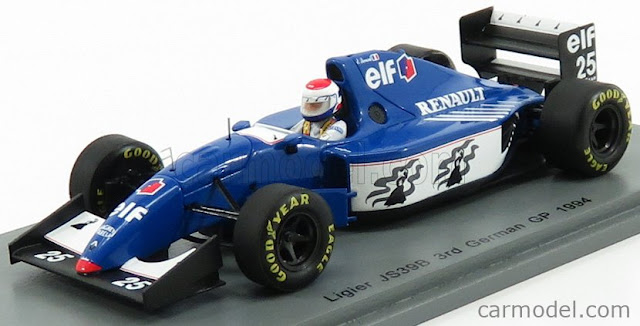 |
| Spark S7403 - Bernard German GP |
 |
| Spark S7404 |
Though Herbert only had one outing at the European GP, he does get a model. Herbert's helmet also has a dark visor, which for me works much better. For some reason, Europe is missing the last 'e' on the case, which I'll put down as a typo.
 |
| Spark S7405 |
Franck Lagorce got a couple of races at the end of the season and this model is based on the final round in the Australian GP.
Minichamps
 |
| Minichamps 417940026 |
Score: 7/10
Minichamps have now released their resin version of the JS39B soon as part of the Michael Schumacher 25th Anniversary Collection.
 |
| Minichamps 517944399 |
For more 1994 Model Reviews, click here: https://fongugp4.blogspot.com/p/1994-model-review.html






